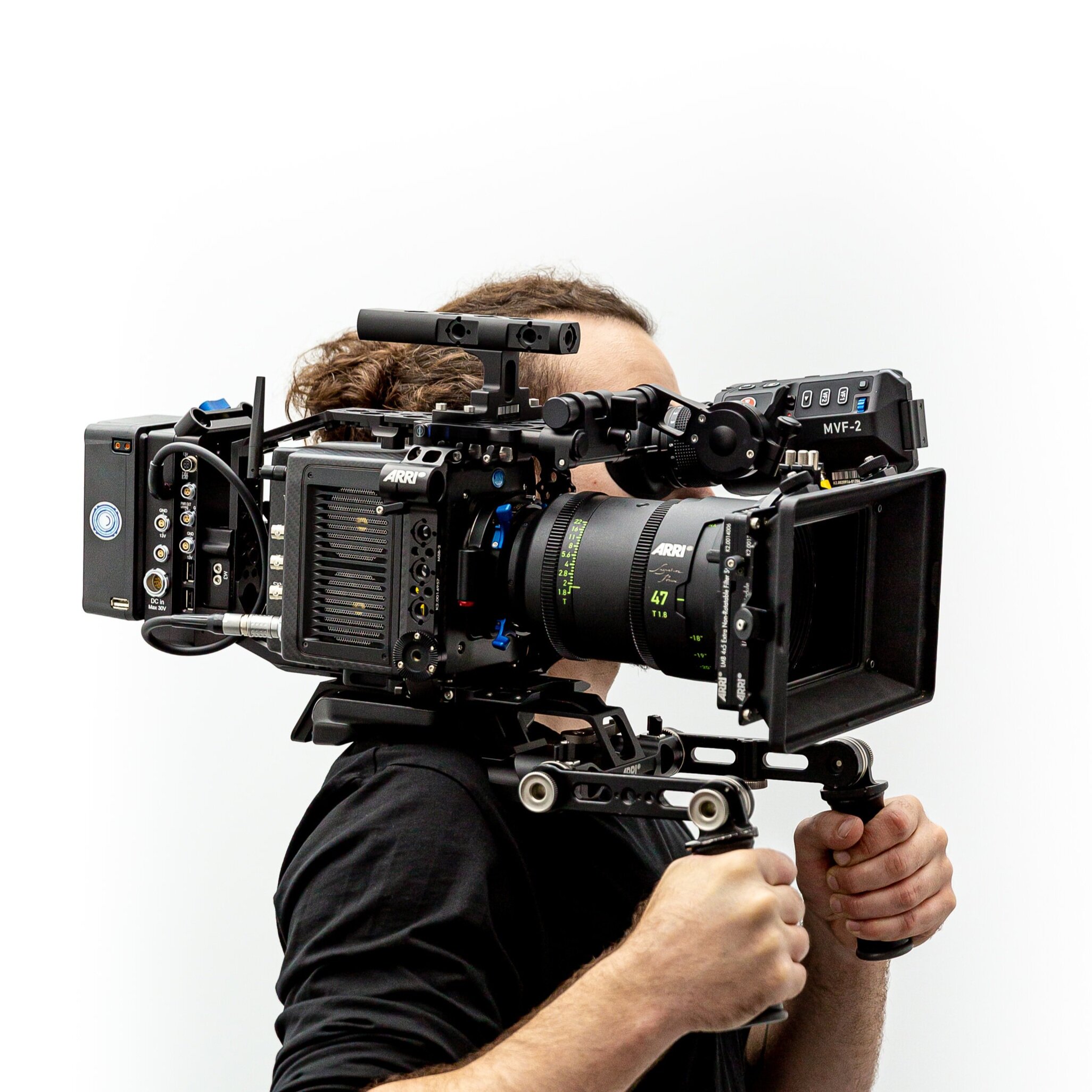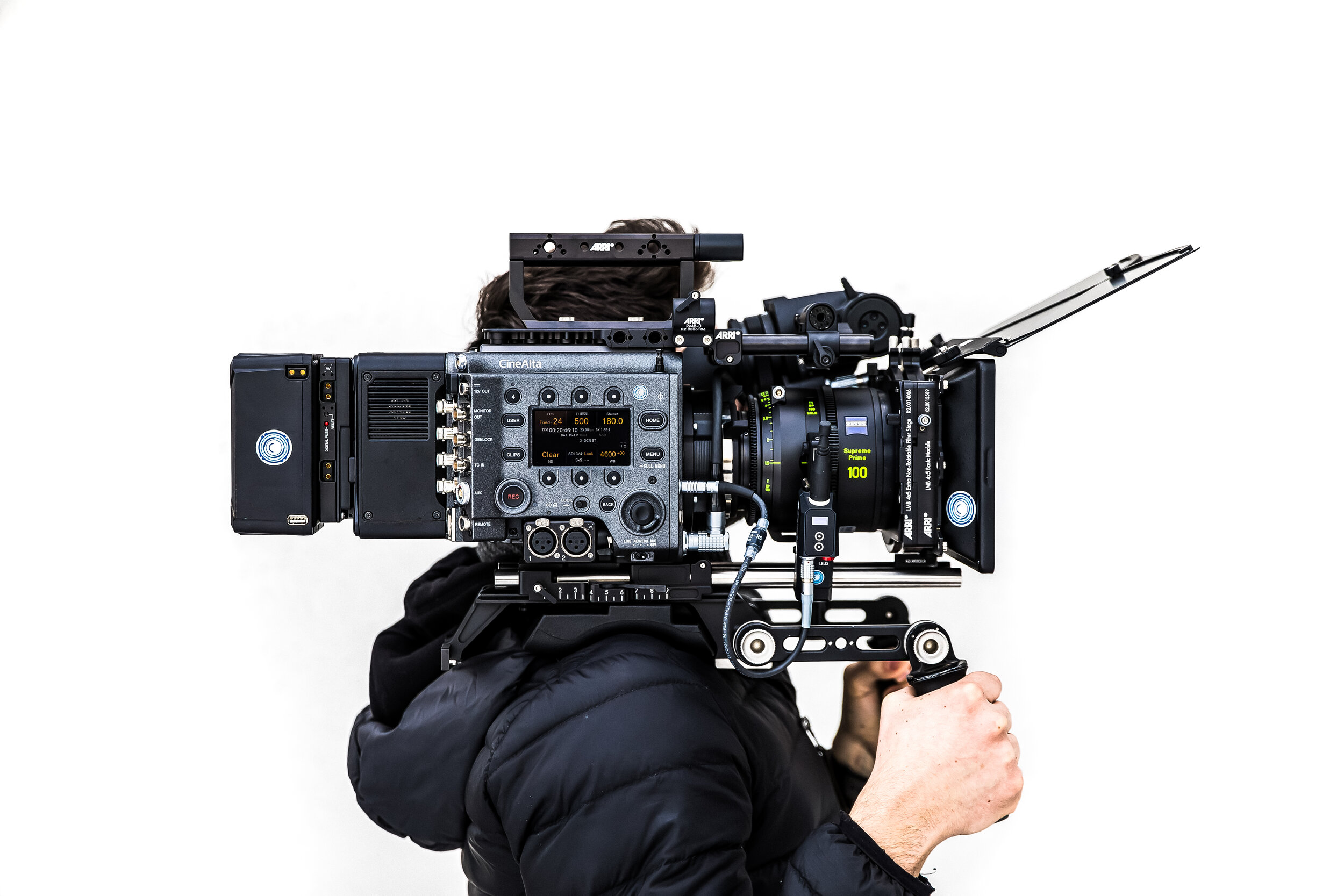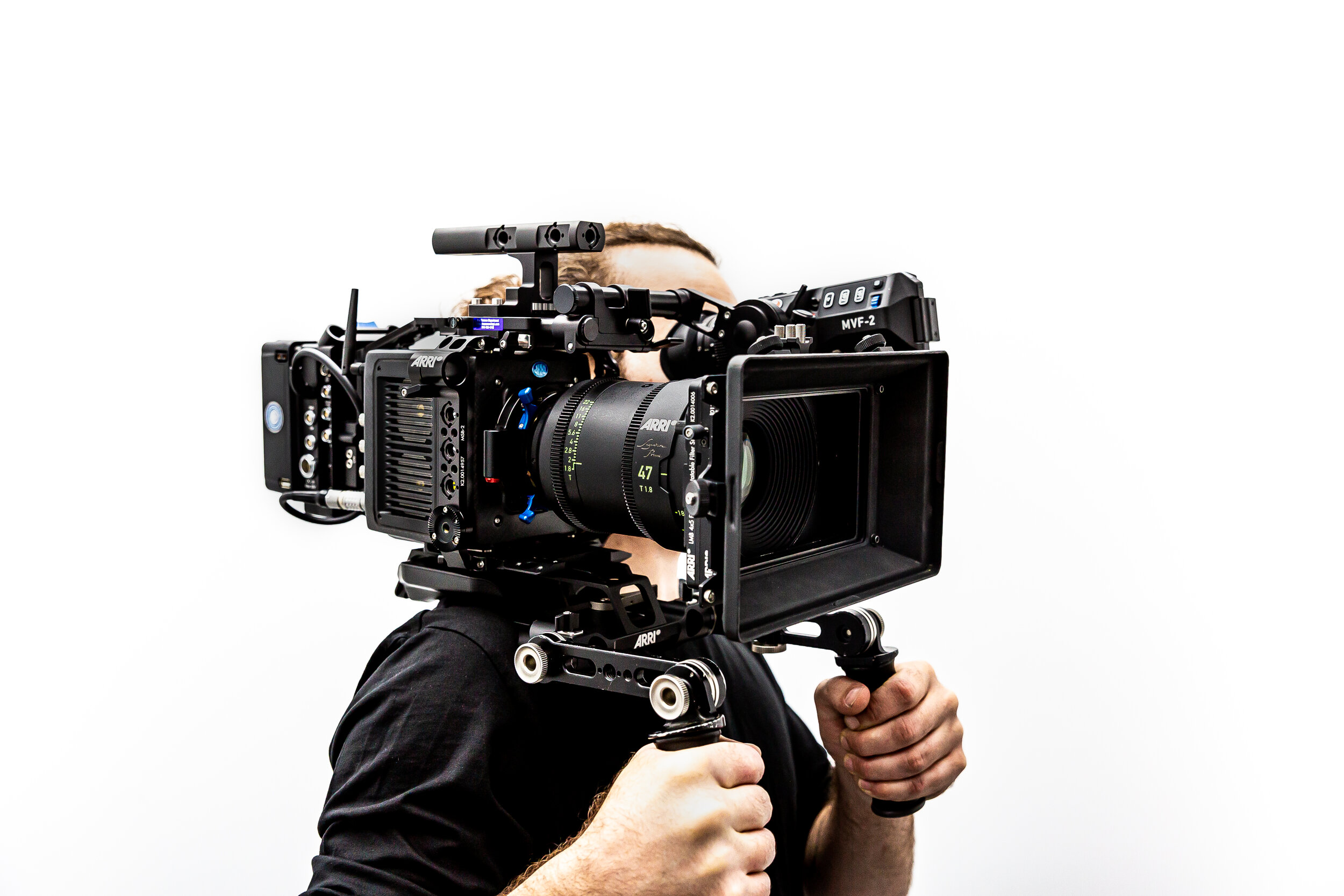Update 3/26/21: Alexa Mini LF SUP 7.0 adds a hard cropped 16x9 full width sensor mode. This recording mode is available in PRORES recording only and downsamples the file to UHD. The new max frame rate in this mode is 48fps. Sony Venice v6 added the ability to shoot up to 72fps in 5.7k 16x9 crop mode from the full width of the sensor.
Today we are examining the main differences between the Alexa Mini LF and the Sony Venice.
Both are incredible full frame cameras with similar body sizes and specs but each have their own unique strengths and weaknesses. Both systems have been able to strike a fine balance of usability depending on your shooting situation. Both are great for handheld, gimbals, rigging, and studio configurations. Both cameras can record high resolution 4k+ images in either RAW or compressed codecs of your choosing and both cameras are armed with an array of power and video ports. At the end of the day I think what it comes down to is how the image feels to the user. Let’s dig in…..
FRAME RATES and RECORDING
I want to talk frame rates first because I think this is one of the biggest factors when deciding between these two full-frame cameras. At full sensor resolution the Venice can record 60fps whereas the Mini LF can only record 40fps. You can achieve higher frame rates from both but with caveats….
VENICE
The full resolution of the Venice sensor is 6k with a 3:2 aspect ratio and is exactly 36x24mm; the same size 35mm photography cameras have been since 1920. The Venice can record internally up to 4k XAVC to SxS cards but will require the R7 recorder to record the full 6k resolution, frame rates higher than 30fps, and Raw. With v5 firmware the camera can go up to 72fps in full-frame 6k 17x9 and 110fps in Super35 UHD mode. The max fps is 120fps at 4k 2.39 crop in super 35 mode. After using the Venice on a few shoots I can say that the frame rate options are great but found that remembering which frame rates are possible in certain modes is frustrating. I think this is where Sony shoots themselves in the foot often. Sometimes features and modes overshadow the user experience…..
MINI LF
The full resolution of the Mini LF sensor is the same size as the Alexa LF. It is 4.5k and is slightly larger than full frame at roughly a 3:2 aspect ratio. The Mini LF can record either Apple ProRes or uncompressed ArriRaw all to the same Codex mini mag. The Mini LF has three modes; 3:2 Open Gate,16x9 UHD, or 2.39 cropped from the full sensors width. UHD utilizes a slightly smaller portion of the sensor hence the ability to shoot 60fps. To record any higher frame rates you are going to need the full size Alexa LF. The Mini LF does not offer a Super35-sized shooting mode so full-frame lenses will be a must unless you crop in post. One huge feature request I have for the LF and Mini LF (that the Venice offers) is the ability to shoot full width Open Gate but in a 16x9 aspect ratio so I can stop getting nasty calls from editors:)
BODY DESIGN, SIZE, AND USER EXPERIENCE
VENICE
The Venice is constructed from robust magnesium alloy and weighs 8 lbs. making it an excellent option for gimbal applications or shooting in tight environments. It can be made even smaller by utilizing the RIALTO extension unit. This separates the sensor from the processor via a single tether cable. On the flip side, it can easily be built up for studio or handheld configurations. AC’s will enjoy the plethora of power ports and monitor outputs. It has an LCD panel on the AC side where all menu functions can be controlled. It has an additional LCD on the operator side where basic shooting functions can be controlled. The Venice has a full set of neutral density filters built in that go all the way up to ND 2.4 in single-stop increments with no color shift. The Venice boots up in a speedy six seconds. One huge advantage of the on-board LCD screen is the ability to control the camera without having to have the EVF on the camera. There is no built-in FIZ control but users have found the CForce Mini RF motor handy via the 3-pin fisher plug near the lens mount.
MINI LF
The Mini LF weighs only 5.7 lbs and is very similar to the original body design of the Alexa Mini with some new handy features. The new card slot is now on the side and not the back. There are now two accessory power ports directly on the body in 24v RS and 12v 2-pin lemo. The menus still have to be controlled via the EVF but a new, simple, evf cable has been utilized that clicks in to the body much easier. An on-board LCD screen would have been great for gimbal builds but Arri has added an additional antenna for wifi promising better control via phone or tablet. The camera has built-in ND’s in .6, 1.2, and 1.8 strengths. To save power the Mini LF does not have a built in wireless video transmitter like the full size LF but retains the built-in FIZ connection using CForce mini motors. Lastly, having a monitor built on to the EVF is extremely convenient. I wish the Venice had this on the EVF. Overall I find the user experience of the Mini LF to be more enjoyable than the Venice.
LENS OPTIONS AND FUTURE UPGRADES
VENICE
The Venice has a native E-mount with a lever locking system. The PL mount sits on top of the E-mount and his held in place with six hex screws. Due to the short flange depth of the E-mount this opens up the ability to adapt to a huge number of lenses with different mounts. Arri Signature Primes can be utilized with the Wooden Camera LPL mount. Shooting with anamorphic lenses is a whole lot easier on the Venice. Setting the camera to a 4:3 mode hard crops the lenses for you in camera where as the Mini LF does not have a dedicated anamorphic mode. Sony has promised a long road map of firmware updates and the potential for user-upgraded sensors. This would allow Sony to sell a new sensor block to existing customers instead of selling a whole new camera platform. Some parts on the Venice can replaced by the user where as the Mini LF would have to go to Arri Service for any hardware modifications.
MINI LF
The Mini LF utilizes the same lens mount style as the original Alexa Mini. Four screws secure the lens mount of your choice to the body. The LPL mount is standard but you can use a PL adapter to step it down. I found that all of our Canon EF glass covered when using the Arri Canon EF lens mount. The Venice certainly has the Mini LF beat at lens mount options due to the E-mount’s short flange depth. I’ve asked numerous folks at Arri about the possibility of higher frame rates in the Mini LF but they all seem to be pretty firm about that NOT happening any time in the future. It would seem that the power and processor are fully maxed out…..
POWER CONSUMPTION
VENICE
The Venice requires 11-32 volts. So it has a single onboard battery mount in addition to a 4-pin XLR. Our Venice kit includes the Wooden Camera D-box for convenient power distribution. The D-box provides multiple 2-pin and 3-pin accessory power ports.
MINI LF
Thankfully the new Mini LF can accept a voltage range from 11-34v so only a single battery is needed for power. I find that the original Alexa Mini has slightly better power consumption over this new body. Our Mini LF kits include the Arri Pro Accessory kit which includes a Bebob gold mount with loads of accessory power ports.
EXPOSURE AND LOOK
VENICE
One unique feature the Venice offers is two base ISO’s of 500 and 2500 with 15+ stops of dynamic range. Sony says noise levels will look identical at each base but in my testing 2500 does appear to have slightly more noise. Sony also promises more pleasing skintones and a more gentle tonal curve by utilizing the new S709 LUT for monitoring. It is a lower contrast LUT that pushes more towards magenta in an effort to help skintones. I find that S709 has much less contrast than Arri 709 but users always have the ability to tweak the look in post.
MINI LF
The nice thing about the Mini LF is it utilizes the exact same Alexa ALEV sensor we’ve come to know and love over the past 10 years. The only difference being that there are two sensors standing side by side instead of one. Arri has always prioritized image quality over resolution and by borrowing some technology from the Alexa 65 they were able to bring a camera to market that could satisfy cinematographers and streaming platforms like Netflix.
FINAL THOUGHTS
After spending a lot of time with both cameras I can honestly say that each create incredible images and each one has their own strenghts. I enjoy the built-in ND’s of the Venice but prefer the overall user experience and look of the Mini LF better. If you need a camera that can shoot high frame rates, choose the Venice. If you love and are used to the “Alexa look” you will love the Mini LF. I know a lot of futurists and engineers cringe when I say it, but I LOVE APPLE PRORES. I also think a lot of directors and editors feel the same way. My 2014 Macbook Pro can still play and edit UHD Prores files IN REAL TIME. That same laptop would catch fire before being able to play XAVC or XOCN files from the Venice. My advice would be to demo both cameras before using them on a shoot. I know that you too will find things you love about BOTH cameras.










